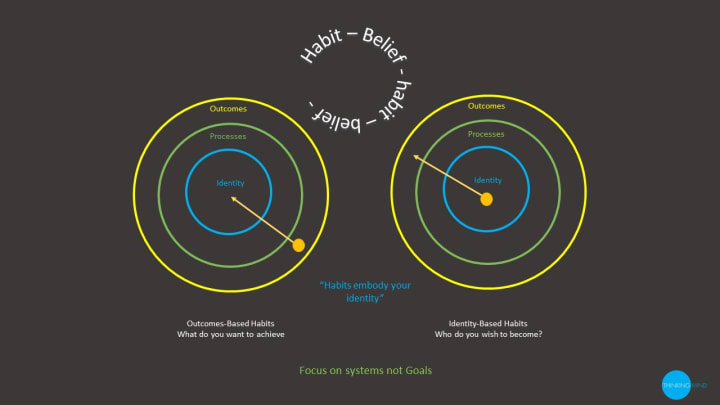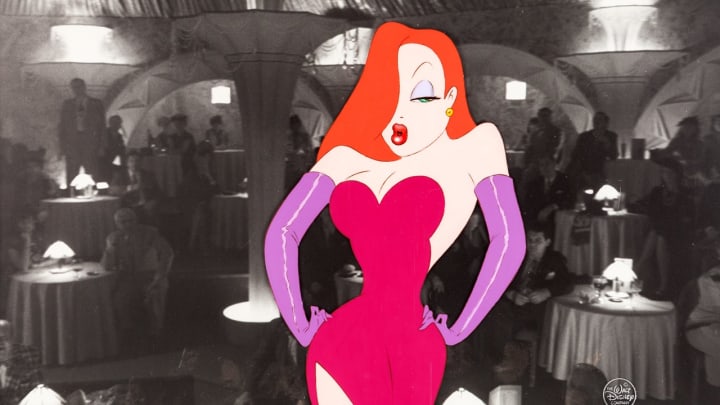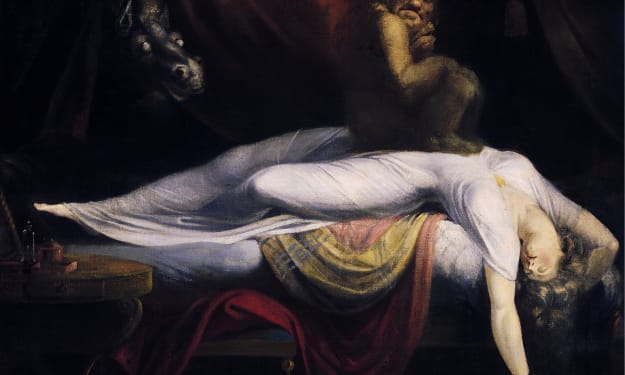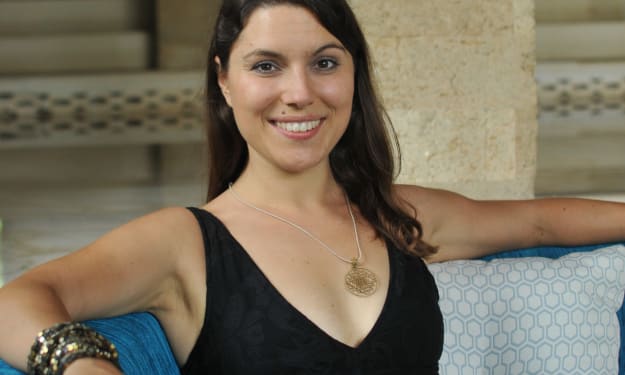How to Change a Habit
3 Steps and 4 Laws to make behaviour change easier.

3 Steps and 4 Laws to make behaviour change easier.
30 years ago, I used to be a very heavy smoker, nearly two packs per day (I also had a huge amount of hair and a moustache back then). Soon after the birth of my daughter, we brought her home from the hospital following a very difficult birth. As I held her in my arms for the first time at home, I had just finished a cigarette. My daughter gave a little cough and I realised if there was ever a time to give up smoking this was it!
But, how do you change a habit or for that matter change a behaviour that is totally integrated into who you think you are?
I had tried many times before to give up smoking, but breaking a habit as strong as mine was isn’t easy and I’d failed many times before. I had tried quite a few substitutes and methods but mostly I just applying will-power to overcome it. Smoking comforted me, my body craved it, my hands needed something to do and it confirmed the image I had of myself.
Will power alone wasn’t enough, I needed a strategy to change my bad habit into a good habit. The first step is to understand what a habit is and how habits are hard-wired into our brains.
One part of me knew it would be better to stop and another part, but a much more persuasive voice, wanted things to carry on as they were. After all who doesn’t want the deep satisfaction of lungs filled with smoke and the pleasure of exhaling long and slow (my daughter perhaps?).
Understanding habits and behaviours.
All habits work similarly; there is a cue that triggers a behaviour that delivers a reward. That sequence becomes a craving cycle that looks for the cue to ignite the reward.

Our brains weigh only 2% of our body weight and use 20% of all our energy. They actively look for ways to save energy and that is why we create habits. We need to automate our actions so that we don’t have to re-consider them all the time.
We are wired to seek out pattern, we chunk together information into meaningful stories and this forms our habits, our assumptions and our beliefs and therefore forms how we behave.

It’s the craving, the expectation of the reward, whatever that might be, that we desire and that drives the behaviour. We crave the endorphins, or the dopamine hit, or the sense of accomplishment.
All we have to do is interrupt the cycle by replacing the routine and behaviour, whilst keeping the same cue and reward.
Step 1. Identify the behaviour.
Before you can change any behaviour, you must first identify what that behaviour is! Behaviours are often routines that we do, like brushing our teeth.
Habits permeate almost everything we do. The desire for the reward sets up the cycle of craving which we find ways of satisfying. Habits are not always bad, of course, in fact, they are essential for our existence. It’s not just habits that are formed by cravings, it’s also our assumptions, attitudes and beliefs and these are the things that drive our behaviour.
When we see or believe in a potential (a potential for the desired result) we take action. When we take action and we get the result, positive or negative, we form an opinion about that result, usually based on previous knowledge and experience and begin to form a belief about how something will behave in the future. And so we set up a cycle that may go up, but may also go down.
Having identified the habit and the routine or behaviour we want to change, we need to dig a little deeper to understand what the motivation is that causes the craving. In all behavioural change, we must believe that we can change.
Step 2. Become the person, not the outcome
Very simply put; Focus on who you wish to become, not on the outcome you want to achieve. It’s a subtle but crucial distinction. Behind every system of actions is a system of beliefs. Beliefs shape the system. It’s hard to change your habits if you never change the underlying beliefs that lead to past behaviour. Make habits part of your identity.
The goal is not to read a book, but to become a reader. The goal is not to run a marathon, the goal is to be a runner. Become whatever it is you want to be, make it your identity. Don’t get stuck with your outdated self-image and assumptions, become consistent with your beliefs and your goals.

This diagram illustrates an identity-based method as opposed to an outcome-based model. Your strategy and system need to be consistent and congruent with who you want to be, not with who you are now.
The most practical way to change who you are is to change what you do, by becoming that person.
Decide the person you want to be.
Prove it to yourself with small wins.
Step 3. Change the routine, keep the cue, keep the reward .
If when we get home in the evening our routine is to kick off our shoes, flop onto the sofa and watch whatever is on TV. We may be doing this because it is an easy way to achieve the reward of relaxing and winding down. But we know that we should or would rather be more active and healthier.

The easy thing to do (and easy is important as we’ll see later) is to change the routine. When we get home, we put on our running gear and trainers, that immediately sets us up to go for a run. We replace kicking off the shoes and flopping on the sofa, by putting on our running gear and now we have a better chance of going for a run, which will achieve the result (reward) of relaxing and, better still, being active and healthy.
Perhaps a simpler example may be to say to yourself; “as soon as I have my morning tea I will read for half an hour” thereby setting the drinking of your morning tea as a cue towards a reward, consistent reading and expanding your knowledge, you want by inserting a trigger to new behaviour.
The 4 Laws of behaviour change.
Whilst it’s all very well to say; change your behaviour there are a few rules you can follow, based on how habits work, that will help you become successful in changing any habit and behaviour.

Law 1. Make it Obvious.
Over a period of time, most habits become invisible, they have become so automatic that we are hardly aware that we are doing them. They are part of our unconscious minds, our purpose here is to make our habits clearly visible so that we can change them if we want to. We need to become aware of our behaviours.
A simple way to do this is to make a list of your habits and then mark them as good, bad or neutral. The question to ask yourself at this point is: Does this behaviour help me to become the person I want to be? Remember, it’s important to be the person rather than just pursue a goal.
All behaviour change starts with awareness. It isn’t motivation we need, it’s clarity.
The reverse of the 1st Law is: Make it invisible.

Law 2. Make it Attractive.
The more attractive an opportunity is, the more likely it is to become habit-forming. It must be something we desire to be.
The rewards cycle is fed by Dopamine, almost every habit-forming behaviour is associated with higher levels of dopamine. Dopamine is a type of neurotransmitter. Your body makes it, and your nervous system uses it to send messages between nerve cells. Dopamine plays a role in how we feel pleasure. To change behaviour, we need to feed the dopamine cycle.
Without desire, all action would stop.
The reverse of the 2nd Law is: Make it unattractive.

Law 3. Make it Easy
The easier something is to do the more likely we are to do it. Most things we do, certainly habits, take the path of least resistance. This is partly because habits form strong regular pathways which we follow. We find what delivers the most value for the least effort. When we want to change behaviour, we should make the changed behaviour as easy and as simple as it can possibly be. We shouldn’t seek perfection; we should seek small steps and repetition.
The more you repeat an action, the more it changes and reinforces the neural pathways in your brain.
All habits follow a similar trajectory from deliberate, effortful practice to automatic behaviour. This is called automaticity, the ability to perform a behaviour without thinking about each step. And that is what we want to achieve. Habits form based on frequency, not time.
This is why you need to make new habits so easy that you’ll do them even if you don’t feel like it. Reduce friction and optimise your environment so that it’s easier to take action. See what you can eliminate rather than add.
The reverse of the 3rd Law is: Make it difficult.

Law 4. Make it Satisfying
A behaviour is worth repeating and remembering if it is pleasurable. What is rewarded is repeated and what is punished is avoided. The way our brains evaluates rewards is inconsistent across time. We tend to value the present more than the future. We prize immediate rewards more than possible future rewards. Therefore we should try to make sure when changing a habit, that the new behaviour offers an immediate reward.
When pleasure is more immediate, it’s important to question whether it aligns with our longer-term goals. It is a vital thing to feel successful – even if it’s only in a small way. Good habits tend to feel worthwhile only after they have provided you with something. Early on, it may feel like a sacrifice.
Use reinforcement, take an immediate reward to increase and reinforce the behaviour. It’s worth making rewards for small gains, new habits need to be enjoyable to last.
The reverse of the 4th Law is: Make it Unsatisfying.

Small steps lead to Huge Leaps
Habits need to be enjoyable if they are going to stick. The greatest threat to success is not a failure, but boredom. We get bored with a challenge when it stops to delight and pleases us. We look for more novel experiences and challenges. This is often the reason why we jump from one thing to another. As soon as we experience a dip in motivation, we begin to seek a new strategy, even if the one we were working on is working. This can happen even if you are doing well. This is why we enjoy habits that constantly provide novelty.
For myself, giving up smoking all those years ago, I hit upon a very simple mental trick. I said to myself, If I could do one minute, then I could do another. If I could do one hour, then I could do another, If I could do one day, then I could do another….So I created an unbroken chain, without trying too hard. 30 years on I…here’s to the next 30 years!
Habit and behavioural change take time, but by taking small steps and following simple rules any behaviour can be changed.
Charles Leon – November 2020






Comments
There are no comments for this story
Be the first to respond and start the conversation.